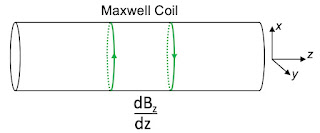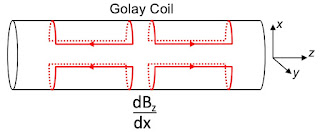 |
| The Deadly Rise of Anti-Science, by Peter Hotez. |
This is a dark and tragic story of how a significant segment of the population of the United States suddenly, defiantly, and without precedent turned against biomedical science and scientists. I detail how anti-science became a dominant force in the United States, resulting in the deaths of thousands of Americans in 2021 and into 2022, and why this situation presents a national emergency. I explain why anti-science aggression will not end with the COVID-19 pandemic. I believe we must counteract it now, before something irreparable happens to set the country on a course of inexorable decline…Where did this 200,000 number come from? On page 2 of Intermediate Physics for Medicine and Biology, Russ Hobbie and I claim that
The consequences are shocking: as I will detail, more than 200,000 Americans needlessly lost their lives because they refused a COVID-19 vaccine and succumbed to the virus. Their lives could have been saved had they accepted the overwhelming scientific evidence for the effectiveness and safety of COVID-19 immunization or the warnings from the community of biomedical scientists and public health experts about the dangers of remaining unvaccinated. Ultimately, this such public defiance of science became a leading killer of middle-aged and older Americans, more than gun violence, terrorism, nuclear proliferation, cyberattacks or other major societal threats.
One valuable skill in physics is the ability to make order-of-magnitude estimates, meaning to calculate something approximately right.
Hotez gives a classic example of estimation when deriving the 200,000 number. First, he notes that 245,000 Americans died of covid between May 1 and December 31, 2021. Covid arrived in the United States in early 2020, but vaccines did not become widely available until mid 2021. Actually, the vaccines were ready in early 2021 (I had my first dose on March 20), but May 1 was the date when the vaccine was available to everyone. During the second half of 2021, about 80% of Americans who died of covid were unvaccinated. So, Hotez multiplies 245,000 by 0.8 to get 196,000 unvaccinated deaths. After rounding this off to one significant figure, this is where he gets the number 200,000.
There are a few caveats. On the one hand, our estimate may be too high. The vaccine is not perfect. If all of the 200,000 unvaccinated people who died would have gotten the vaccine, some of them would still have perished from covid. If we take the vaccine as being 90% effective against death, we would multiple 196,000 times 0.9 to get 176,400. On the other hand, our estimate may be too low. Covid did not end on January 1, 2022. In fact, the omicron variant swept the country that winter and at its peak over 2000 people died of covid each day. So, the total covid deaths since the vaccine became available—the starting point of our calculation—is certainly higher than 245,000.
As Hotez points out, other researchers have also estimated the number of unnecessary covid deaths, using slightly different assumptions, and all the results are roughly consistent, around 200,000. (Hotez’s book appears to have been written in mid-to-late 2022; I suspect the long tail of covid deaths since then would not make much difference to this estimation, but I’m not sure.)
In the spirit of an order-of-magnitude estimate, one should not place too great an emphasis on the precise number. It was certainly more than twenty thousand and it was without a doubt less than two million. I doubt we’ll ever know if the “true” amount is 187,000 or 224,000 or any other specific value. But we can say with confidence that about a couple hundred thousand Americans died unnecessarily because people were not vaccinated. Hotez concludes
That 200,000 unvaccinated Americans gave up their lives needlessly through shunning COVID-19 vaccines can and should haunt our nation for a long time to come.
Infectious disease scientists such as Peter Hotez, Tony Fauci, and others are true American heroes. That far-right politicians and journalists vilify these researchers is despicable and disgusting. We all owe these scientists so much. Last Monday was “Public Health Thank You Day” and yesterday was Thanksgiving. I can think of no one more deserving of our thanks than the scientists who led the effort to vaccinate America against covid.
Why Science Isn’t Up for Debate, with Peter Hotez.











